Jun 25 2016
Windy video day
Today Romana would video the girls and me. I was a bit nervous about the quality of the result, because Romana would have to steer the launch and take video at the same time.
Also, our lake’s sense of humor played up again. On video day, there was a bit of chop. I did steady state plus a few minutes of 27-28spm rowing next to the girls in the double, and a few 32spm sets for the video.
Here’s the result. Even though it’s shaky, I think side videos from a launch are much better to study technique and come up with recommendations than the GoPro videos from behind. I am really looking forward to the comments!
The best part of the video is the last 2 minutes.



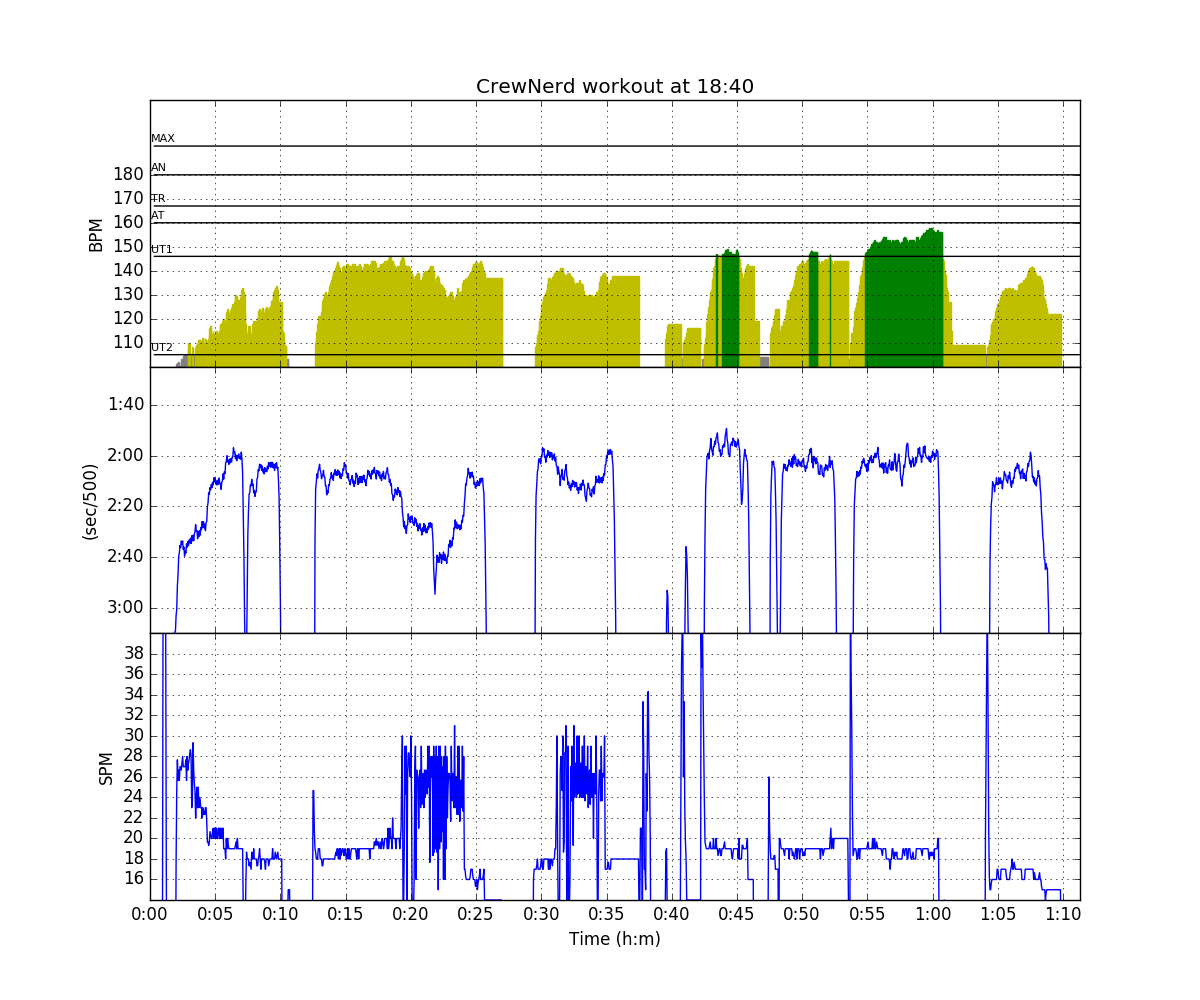
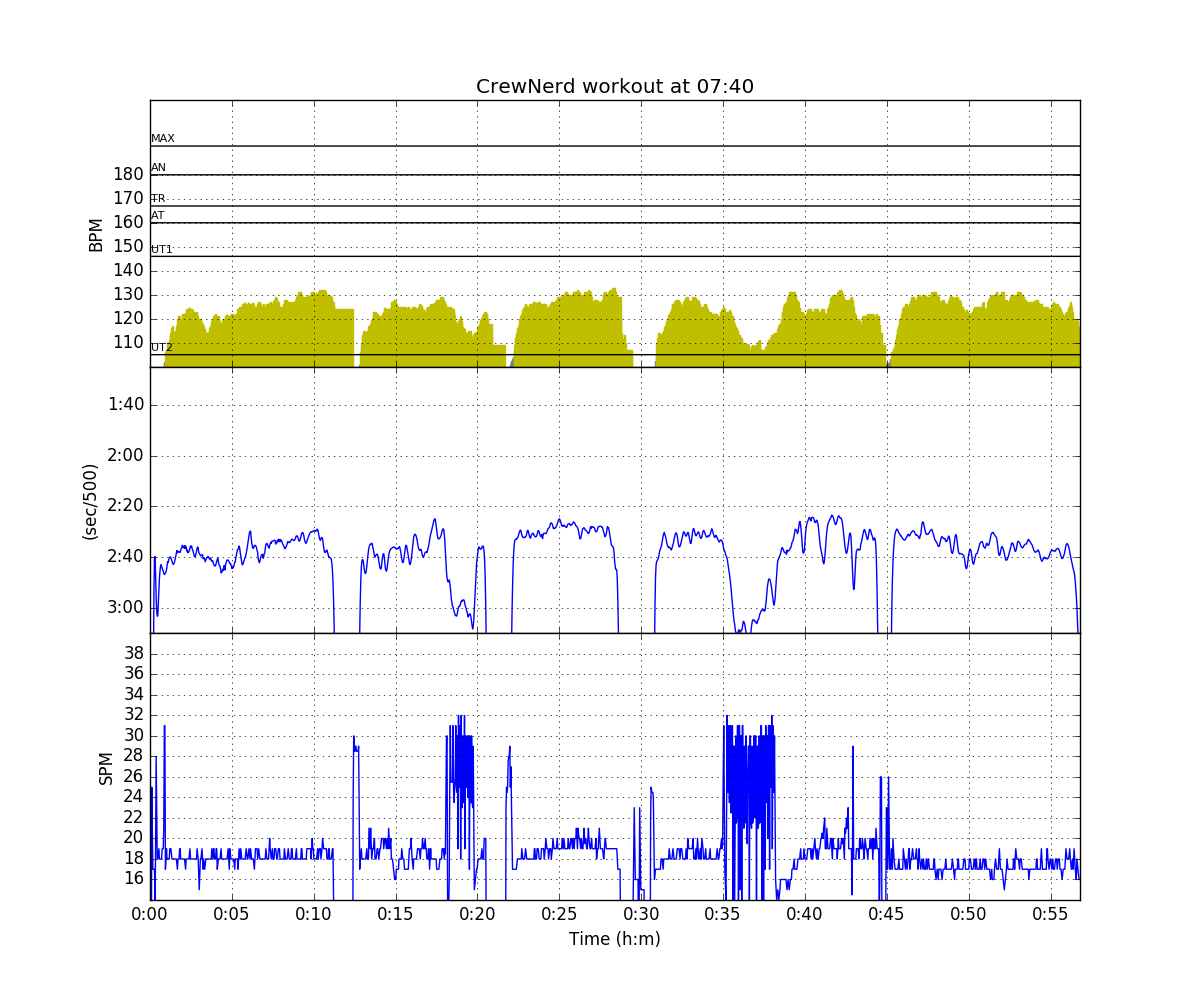


















































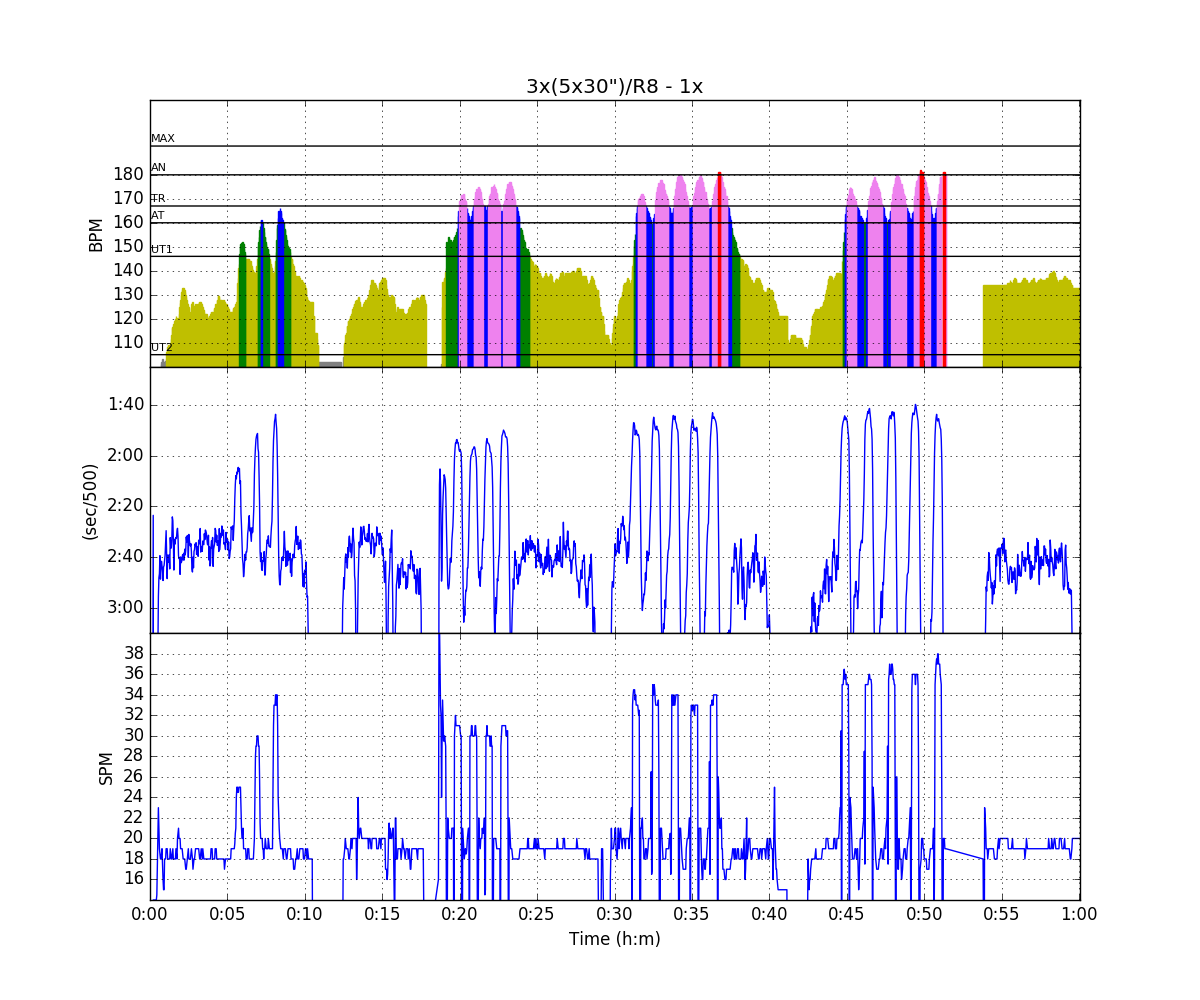
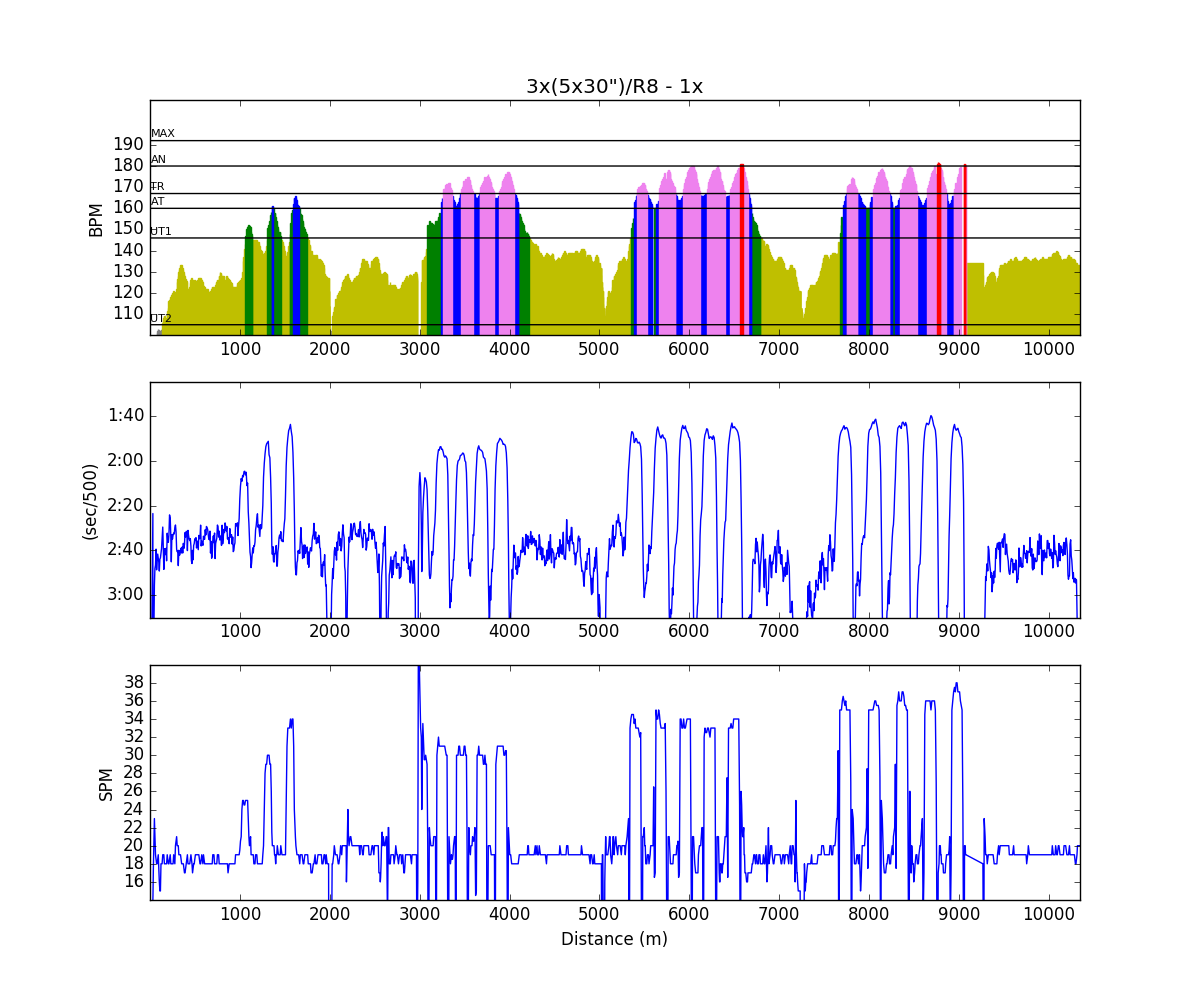

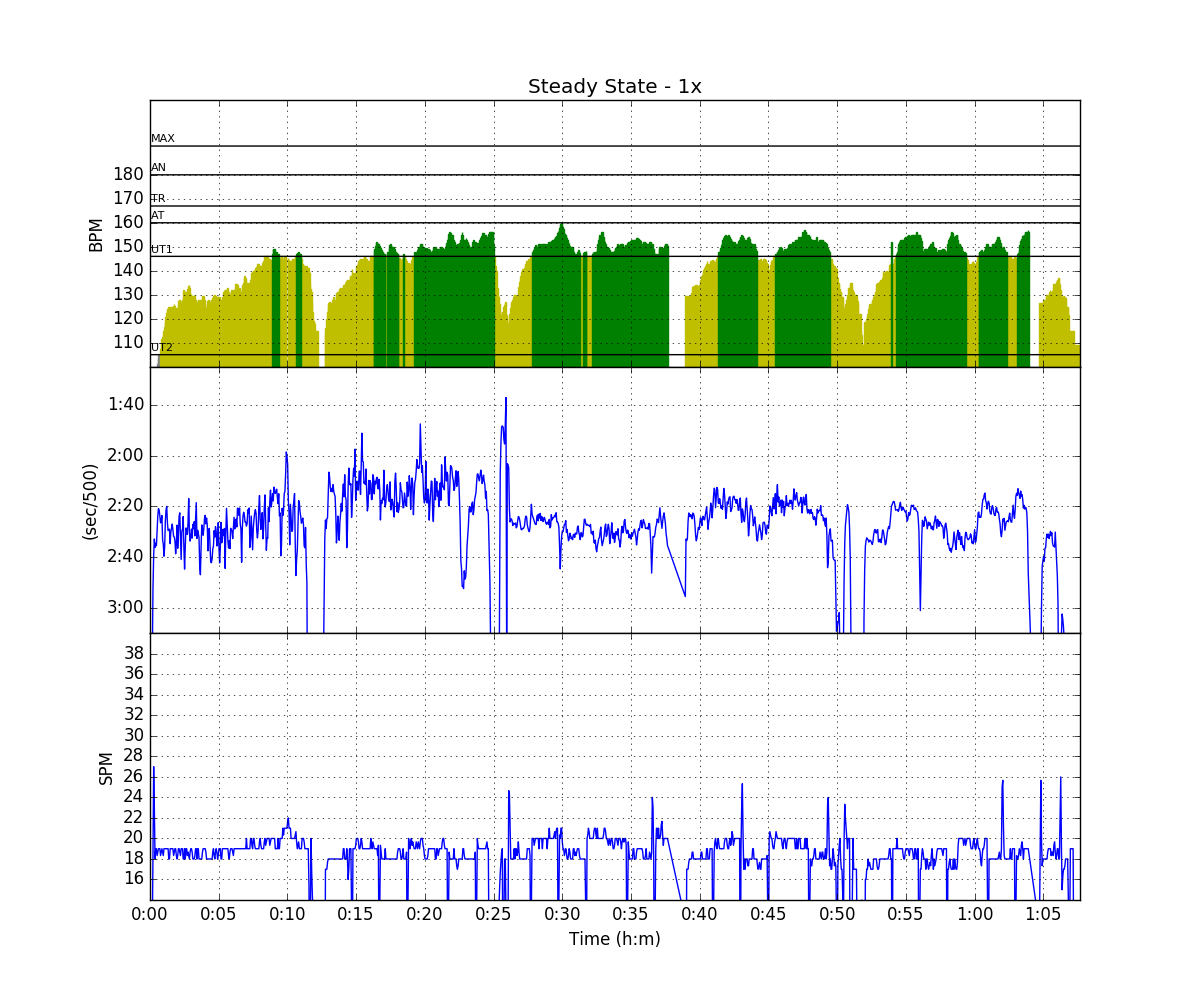

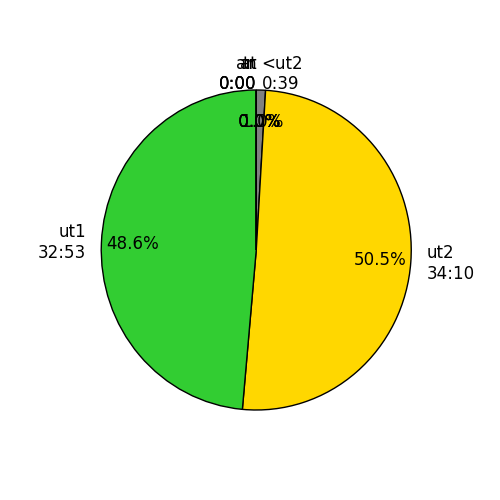


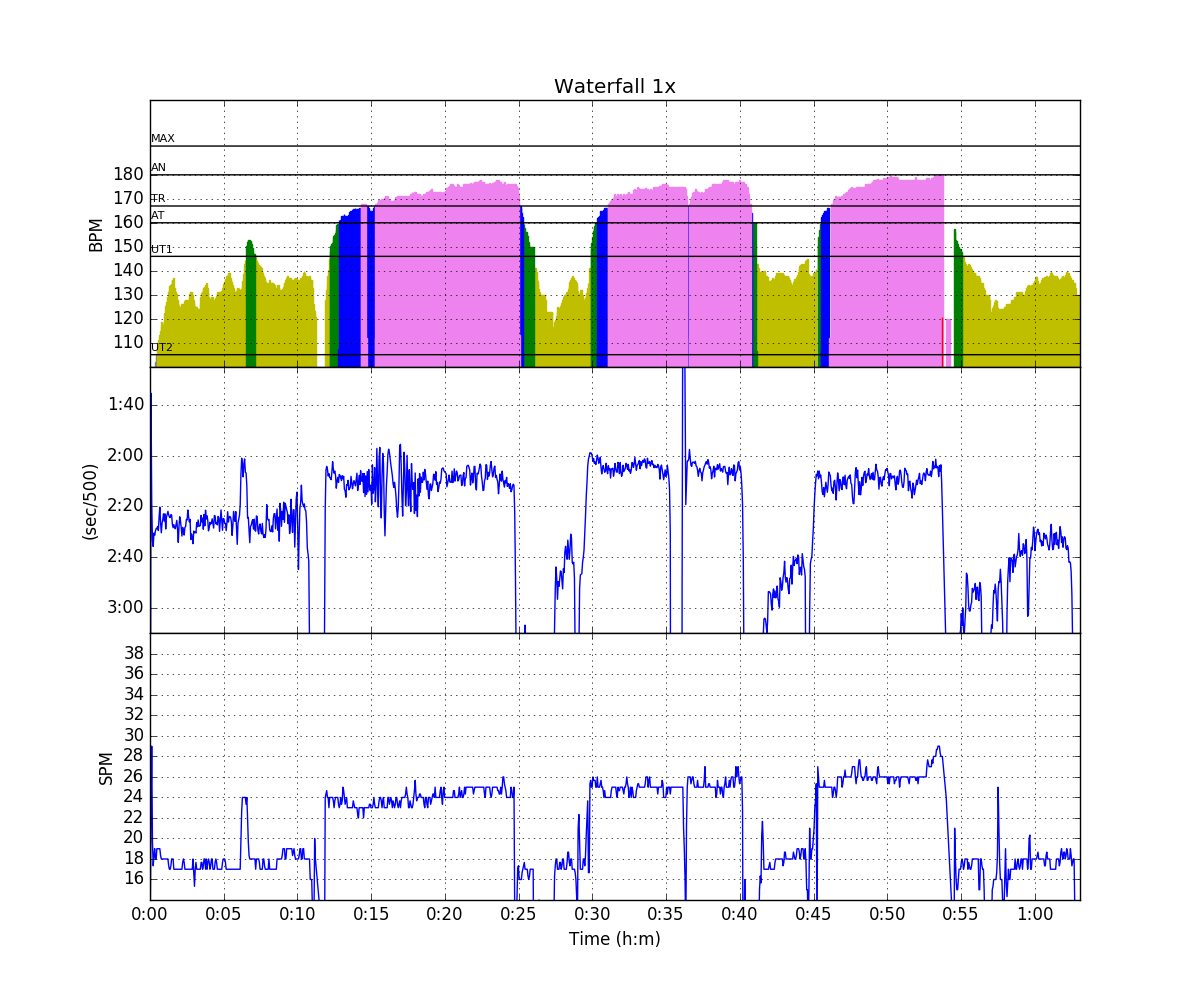
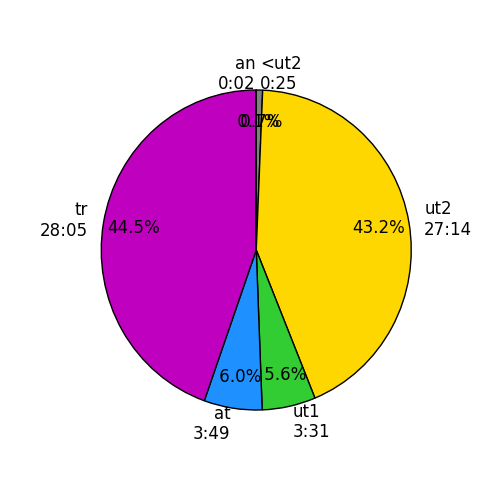


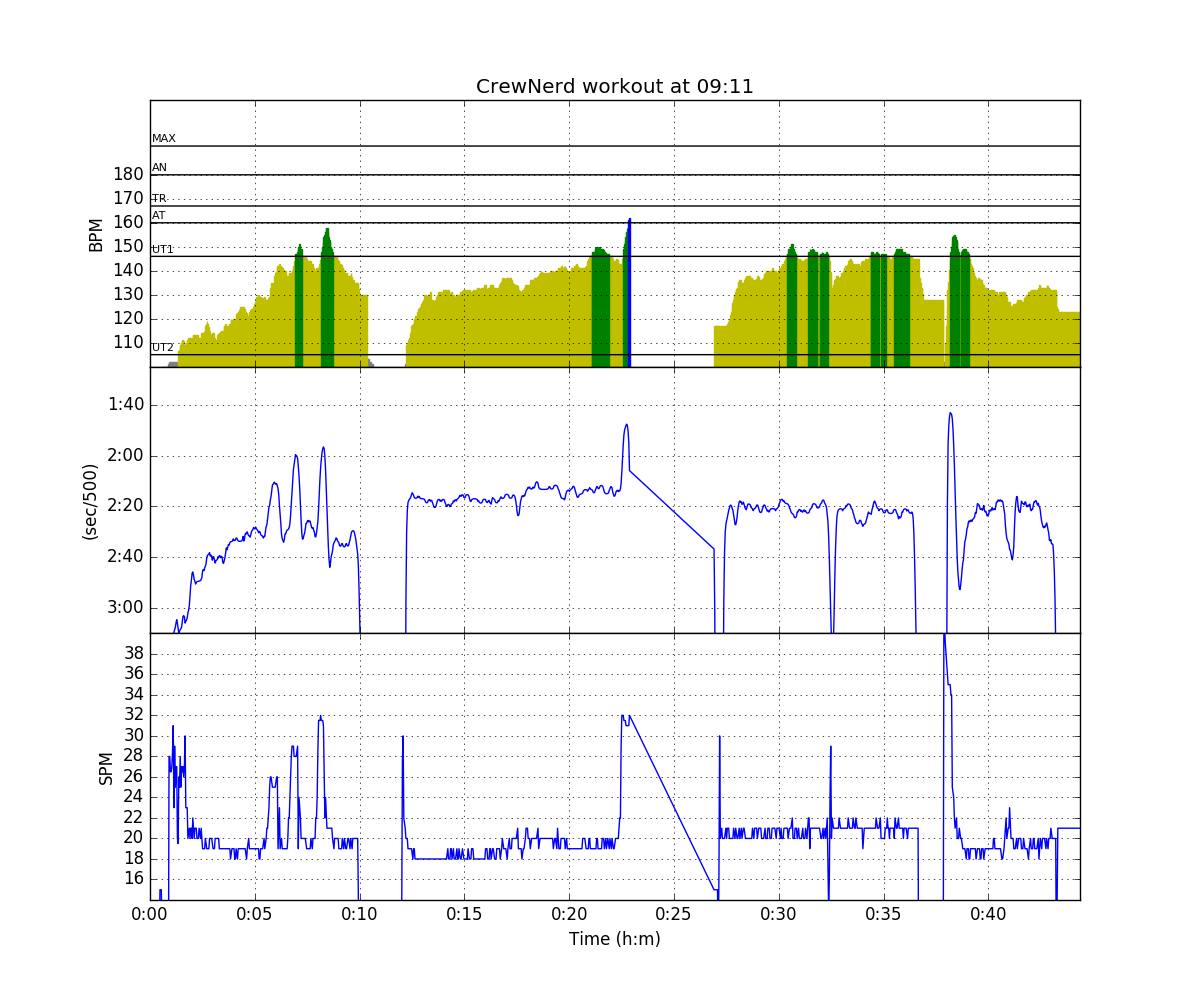

Jun 28 2016
Goodbye long intervals – 4x2km OTW, plus some info on rowsandall.com
The training
Last time I did this workout, 4x2km with 5 minutes rest, was on April 29th. Then I managed a 2:12.2 average, so today I was shooting for “faster than 2:12”.
In line with my plan, this would be the final “long interval” session of this OTW season. After today, it’s “so long, long intervals” until some time in September.
As I have a day off, I also wanted to take the time and experiment with the footstretcher location. After watching my video, several people suggested to move the footstretcher slightly sternward. So I did, but not immediately. The plan was to row the first two 2kms with the old rigging, and then change. I would take a bit more time between intervals #2 and #3 to move the stretcher and to get a bit more rest, so that hopefully fatigue would not influence the experimental results too much.
Wind was between 1 and 2 m/s varying between North and NorthWest, according to SportTracks, and it was between 2.5 m/s and 3.5 m/s NNW according to WindFinder’s prediction. On the water, I definitely noticed that the wind was growing. Between the tailwind intervals #1 and #3 there was definitely a stronger tailwind in #3, but also the water changed from “ripples” to “small chop”, and I wasn’t faster in #3 (with the new footstretcher setting). For the headwind intervals #2 and #4, pace went down by 3 seconds (from 2:09 to 2:12) with #4 being the slowest interval. Definitely a interval #4 was the hardest battle seeing the slowest splits at some points. I also noticed that interval #4 got quite sloppy in one point. When I realized it, with about 500m to go, I started to focus more on technique, which gave me a few seconds of split in the right direction (it could also have been the effect of a slight turn in the course, which made the wind less head-on and more cross-wind).
More about wind in the second half of this blog. First, the plots:
And the stats:
Workout Summary - media/20160628-105331-2016-06-28-0805.CSV
--|Total|-Total-|--Avg--|Avg-|-Avg-|-Max-|-Avg
--|Dist-|-Time--|-Pace--|SPM-|-HR--|-HR--|-DPS
--|13528|62:39.0|02:17.3|23.9|153.4|163.9|09.2
Workout Details
#-|SDist|-Split-|-SPace-|SPM-|AvgHR|MaxHR|DPS-
01|02980| 15:08 |02:31.5|19.6|131.0|161.0|10.1
02|02000| 08:06 |02:01.5|27.0|165.0|173.0|09.1 | tailwind standing start
03|02000| 08:35 |02:08.9|27.2|172.0|177.0|08.5 | headwind rolling start
04|00781| 04:30 |02:36.2|19.9|134.0|144.0|09.6 | tailwind standing start, footstretcher moved
05|02000| 08:06 |02:01.7|28.2|169.0|176.0|08.7 | headwind rolling start
06|02000| 08:49 |02:12.5|27.4|171.0|177.0|08.3
07|01767| 09:25 |02:40.1|18.1|132.0|139.0|10.3
You can see more on the workout page or the interactive plot on rowsandall.com.
After the session I did some rigging measurements, just to make sure I had all the data, and also to compare with on-line rigging charts for single sculls. The problem of course was that I never measured “work-through” myself, so I measured this differently than the tables. What I measured:
What people measure:
I am actually not sure how people measure this without help, and I am not sure how accurate these measurements are … OK, will do more measurements tomorrow. Also, I forgot to measure footstretcher height and angle.
I will keep the footstretcher at the new position for a while. Boat didn’t feel significantly heavier at the catch.
Uploading trainings to Concept2 and comparing trainings
Regular readers know that I have been building a website to support creating those colorful plots that I show in my blogs. The site is at rowsandall.com. There has been quite an evolution over the past few weeks, probably because I put a lot of my free time into it. So here is an overview of the functionality:
Actually, everything I do on this blog is now going through that site. Bugs are starting to get relatively minor and seldom, so I encourage you to take a look, register, and try it out. Comments here or on rowsandall.slack.com.
That last functionality, comparing workouts, is relatively new, but quite interesting. Here are a few example plots for today’s workout vs the same workout done on April 29th:
The distance axis is not completely similar between the two workouts, because I took more time and distance for the warming up. Still it is clear that I managed significantly higher stroke rates and faster paces today. I call that progress (and perhaps the effect of the low i sculls). It cannot be only due to the warming up of the water …
Geeky stuff
Another thing that I am working on is correction for wind. The trouble is of course to get good wind data. Must develop a portable data logging wind meter for rowers …
Using the GPS track (and some data smoothing) you can calculate the boat’s bearing, and thus its angle with respect to the wind. Decomposing that wind into head/tailwind and crosswind components is then child’s play. Here’s my track of today:
Here is the wind according to SportTracks, taking data from nearby amateur weather stations:
Taking the prediction from WindFinder, the same plot looks like this:
Both plots were generated directly on rowsandall.com using the wind editor. I haven’t implemented wind correction on the site yet, but I have it working on the desktop. Please don’t look at the “Erg Power” and “Erg Pace” lines. They are off and I know it. That’s the next step. As the whole calculation takes about 10 minutes, I need to program this as a “background task”, enabling the users to come back to the calculations once they are done (and sending them a message when that is the case).
As you can see from the second plot, the calculation sometimes fails. Need to look into this a bit more.
Comparing the tailwind section’s comparisons, I think the truth is somewhere between the two plots.
By sanderroosendaal • Uncategorized • 3 Comments • Tags: 4x2km, lake, OTW, rowing, rowing physics, single, wind correction